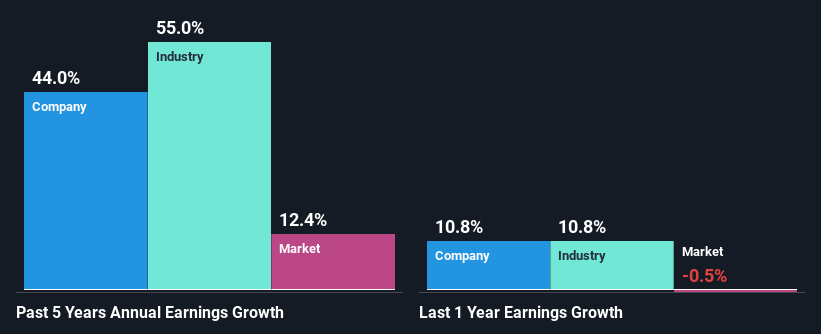Clarkson PLC's (LON:CKN) Stock's On An Uptrend: Are Strong Financials Guiding The Market?
Clarkson's (LON:CKN) stock is up by a considerable 25% over the past three months. Given the company's impressive performance, we decided to study its financial indicators more closely as a company's financial health over the long-term usually dictates market outcomes. Particularly, we will be paying attention to Clarkson's ROE today.
Return on equity or ROE is an important factor to be considered by a shareholder because it tells them how effectively their capital is being reinvested. Put another way, it reveals the company's success at turning shareholder investments into profits.
See our latest analysis for Clarkson
How Do You Calculate Return On Equity?
The formula for return on equity is:
Return on Equity = Net Profit (from continuing operations) ÷ Shareholders' Equity
So, based on the above formula, the ROE for Clarkson is:
19% = UK£86m ÷ UK£457m (Based on the trailing twelve months to December 2023).
The 'return' is the income the business earned over the last year. That means that for every £1 worth of shareholders' equity, the company generated £0.19 in profit.
What Is The Relationship Between ROE And Earnings Growth?
We have already established that ROE serves as an efficient profit-generating gauge for a company's future earnings. Depending on how much of these profits the company reinvests or "retains", and how effectively it does so, we are then able to assess a company’s earnings growth potential. Generally speaking, other things being equal, firms with a high return on equity and profit retention, have a higher growth rate than firms that don’t share these attributes.
Clarkson's Earnings Growth And 19% ROE
To start with, Clarkson's ROE looks acceptable. Further, the company's ROE is similar to the industry average of 22%. Consequently, this likely laid the ground for the impressive net income growth of 44% seen over the past five years by Clarkson. We believe that there might also be other aspects that are positively influencing the company's earnings growth. Such as - high earnings retention or an efficient management in place.
We then compared Clarkson's net income growth with the industry and found that the company's growth figure is lower than the average industry growth rate of 55% in the same 5-year period, which is a bit concerning.
The basis for attaching value to a company is, to a great extent, tied to its earnings growth. The investor should try to establish if the expected growth or decline in earnings, whichever the case may be, is priced in. Doing so will help them establish if the stock's future looks promising or ominous. Has the market priced in the future outlook for CKN? You can find out in our latest intrinsic value infographic research report.
Is Clarkson Using Its Retained Earnings Effectively?
Clarkson's three-year median payout ratio is a pretty moderate 37%, meaning the company retains 63% of its income. This suggests that its dividend is well covered, and given the high growth we discussed above, it looks like Clarkson is reinvesting its earnings efficiently.
Besides, Clarkson has been paying dividends for at least ten years or more. This shows that the company is committed to sharing profits with its shareholders. Looking at the current analyst consensus data, we can see that the company's future payout ratio is expected to rise to 46% over the next three years. Therefore, the expected rise in the payout ratio explains why the company's ROE is expected to decline to 14% over the same period.
Conclusion
In total, we are pretty happy with Clarkson's performance. Particularly, we like that the company is reinvesting heavily into its business, and at a high rate of return. As a result, the decent growth in its earnings is not surprising. Having said that, on studying current analyst estimates, we were concerned to see that while the company has grown its earnings in the past, analysts expect its earnings to shrink in the future. To know more about the company's future earnings growth forecasts take a look at this free report on analyst forecasts for the company to find out more.
Have feedback on this article? Concerned about the content? Get in touch with us directly. Alternatively, email editorial-team (at) simplywallst.com.
This article by Simply Wall St is general in nature. We provide commentary based on historical data and analyst forecasts only using an unbiased methodology and our articles are not intended to be financial advice. It does not constitute a recommendation to buy or sell any stock, and does not take account of your objectives, or your financial situation. We aim to bring you long-term focused analysis driven by fundamental data. Note that our analysis may not factor in the latest price-sensitive company announcements or qualitative material. Simply Wall St has no position in any stocks mentioned.

 Yahoo Finance
Yahoo Finance 
